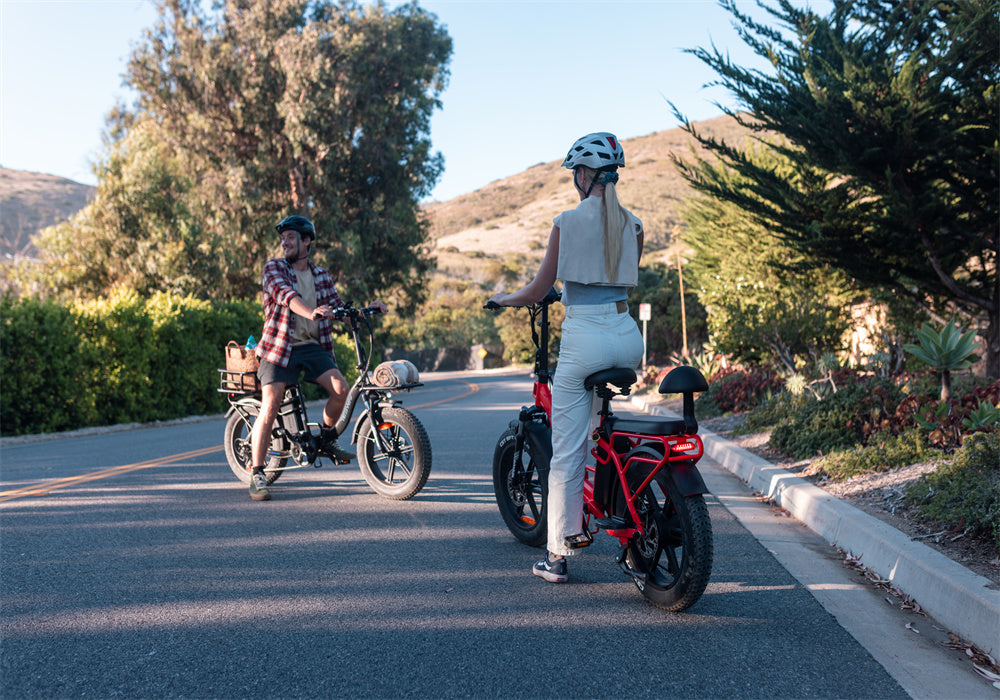Electric bikes have surged in popularity, offering an efficient, eco-friendly mode of transportation that combines the physical benefits of cycling with the convenience of motorized assistance. As riders integrate e-bikes into their daily routines, questions about their durability and performance in various weather conditions, especially their ability to handle wet conditions, become increasingly pertinent. But as their popularity soars, a pressing question emerges for many prospective and current owners: Can electric bikes get wet? Yes, electric bikes can get wet. However, there are still some issues that require attention!
Your E-Bike's Defense Against the Elements
At the heart of an electric bike's resilience to water is its IP (Ingress Protection) rating—a measure of the device's effectiveness against the intrusion of solid objects and liquids. An electric bike's motor, battery, and controller come with specific IP ratings that signify their level of waterproofing. Generally, a higher IP rating means better protection against water and dust. For instance, an IP65 rating offers dust-tight protection and resistance against water jets from any direction, making it a common standard for electric bikes intended for everyday use in various weather conditions. The TESWAY S7 is highly waterproof, so you can ride in the rain with confidence!
Best Practices for E-Bike Riders
Understanding that e-bikes are built to endure wet conditions to a certain extent, riders should still exercise caution to maintain their bike's longevity and ensure safety. Here are detailed strategies and considerations:
Safety and Maintenance
-
Pre-Ride Checks: Ensure that your e-bike's components, such as brakes and tires, are in optimal condition for wet weather riding.
-
During the Ride: Avoid deep puddles or flooding, as submerging the bike could lead to water infiltrating the electrical systems.
- Post-Ride Care: Dry your e-bike thoroughly after exposure to rain. Pay special attention to the electrical components, including the battery compartment and connectors, to prevent

Protecting the Battery and Electrical System
The e-bike's battery and electrical system are its lifelines. When cleaning your e-bike, remove the battery and avoid direct water contact with the electrical system. Use a damp cloth for cleaning and ensure the battery compartment is completely dry before reinserting the battery.
Storage Solutions for Humid and Wet Climates
Proper storage is crucial for maintaining an e-bike's condition. Store your e-bike in a dry, well-ventilated area to prevent moisture accumulation. For riders in coastal or humid climates, consider using a dehumidifier in the storage area to protect against rust and corrosion.

Extending Your E-Bike's Life
Regular maintenance is vital for the optimal performance and longevity of your e-bike, especially if frequently exposed to wet conditions.
Frequent Inspections: Regularly inspect your e-bike for any signs of rust, wear, or water damage, particularly if you've been riding in heavy rain.
Lubrication is Key: Keep the chain and mechanical parts well-lubricated to prevent rust and ensure smooth operation.
Professional Check-ups: Annual or bi-annual servicing by a professional can identify and address issues that may not be immediately apparent, safeguarding against future breakdowns.
Wrapping Up
Equipped with the knowledge of an e-bike's water resistance capabilities, riders can embrace wet weather conditions with confidence. By adhering to the guidelines outlined for care, maintenance, and riding in the rain, you can ensure that your e-bike remains a reliable companion, ready to tackle the challenges of any weather. Remember, with the right precautions and regular maintenance, a little rain won't stop you from enjoying the ride.
FAQs
How often should I clean my electric bike?
Cleaning frequency depends on how often you ride and in what conditions. If riding in wet or muddy conditions, cleaning after each ride is recommended. Otherwise, a thorough clean every few weeks is sufficient.
Can waterproof covers protect my e-bike when parked outside?
Yes, using a waterproof cover can protect your e-bike from rain and moisture when parked outside. Ensure the cover is well-fitted and covers the entire bike, including the bottom portion where water splash can occur.
Are all parts of an electric bike equally water-resistant?
Not all parts of an e-bike have the same level of water resistance. The electrical components, such as the battery and motor, typically have higher IP ratings for water resistance, while other parts like the frame and mechanical components may have lower resistance and require more regular maintenance to prevent rust and corrosion.







Share:
Best Price Electric Bikes You Could Buy!
This Is The Best Hybrid Bikes For Men!